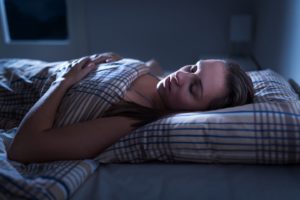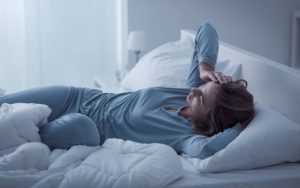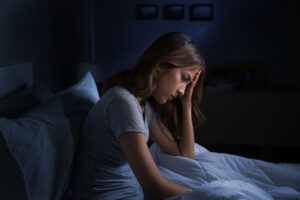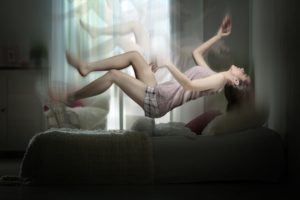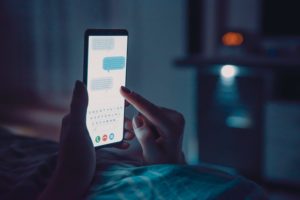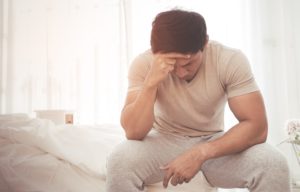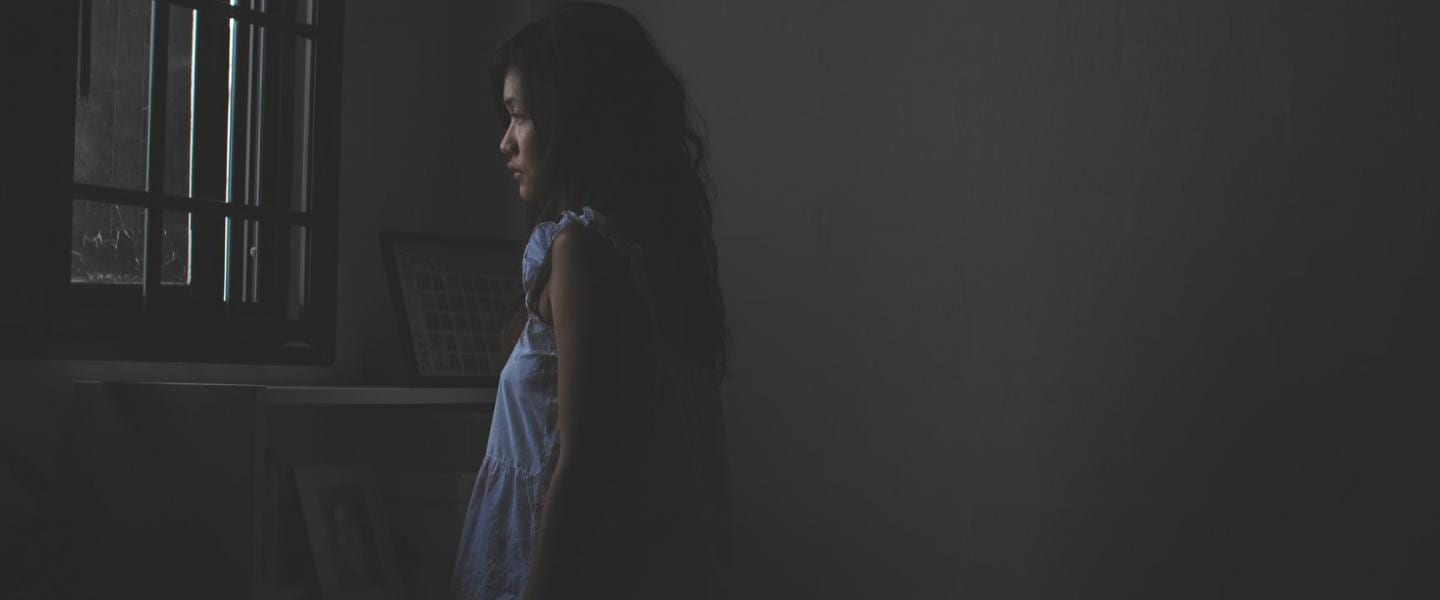When you buy through our links, we may earn a commission. Products or services may be offered by an affiliated entity. Learn more.
Sleep Demon: Understanding the Phenomenon
- Sleep demons commonly involve temporary paralysis when falling asleep or waking up.
- Other sensations may include chest pressure and hallucinating a presence in the room.
- Sleep demons differ from nightmares as individuals are semi-aware during the hallucination.
- Prevent sleep demons by relaxing and reducing anxiety before bed.
Sleep demons are frightening phenomena that are all too real for people who experience sleep paralysis. Roughly 20% of people have an episode of sleep paralysis at least occasionally. In as many as 75% of these episodes, the sleeper has a hallucination in which they hear, see, feel, or sense something in their bedroom that is not actually there.
Sleep-related hallucinations have been described throughout recorded history. We explore the fascinating topic of sleep demons, including various cultural depictions of these sleep intruders, modern scientific explanations, and ways to reduce the risk of sleep paralysis.
Are Your Sleep Disruptions a Concern?
Sleep paralysis and other sleep disruptions are often indicative of other issues such as sleep apnea. Answer three questions to understand if you should be concerned.
What Causes Sleep-Related Hallucinations?
Although they do not know the exact cause, scientists hypothesize that hallucinations on the edges of sleep result from dreamlike sensations continuing into waking life.
As a person drifts off to sleep, their body begins to cycle through two types of sleep: rapid eye movement (REM) sleep and non-rapid eye movement (NREM) sleep. During REM sleep there is a heightened level of activity in the brain, and breathing, blood pressure, and heart rate increase. This is also the type of sleep characterized by rich and detailed dreams and nightmares.
Paradoxically, during REM sleep the body enters a state of temporary paralysis called muscle atonia. This state is likely a mechanism to prevent sleepers from injuring themselves by acting out their dreams.
In sleep paralysis, the lines between sleep and wakefulness become blurred. As a person is at the edge of waking up or falling asleep, they become aware of their surroundings while their muscle paralysis continues for a few seconds to several minutes. This means that they can think, see, and breathe while they lie awake, but they are unable to move their body.
When sleep paralysis is accompanied by a sleep-related hallucination, the person then begins to see, hear, feel, or sense changes in their environment that do not actually exist. Hallucinations may be simple, stationary images or more complex and multisensory intruder, incubus, or vestibular-motor hallucinations.
- Intruder hallucinations: An intruder hallucination describes seeing or otherwise sensing something threatening in the bedroom, like a dangerous person or a menacing presence. This type of hallucination often occurs alongside incubus hallucinations.
- Vestibular-motor hallucinations: A vestibular-motor hallucination involves imagined sensations in the body including movement, out-of-body experiences, or feelings of bliss.
- Chest pressure hallucinations: Also called incubus hallucinations, a person may feel like they are suffocating or that something is pressing on their chest.
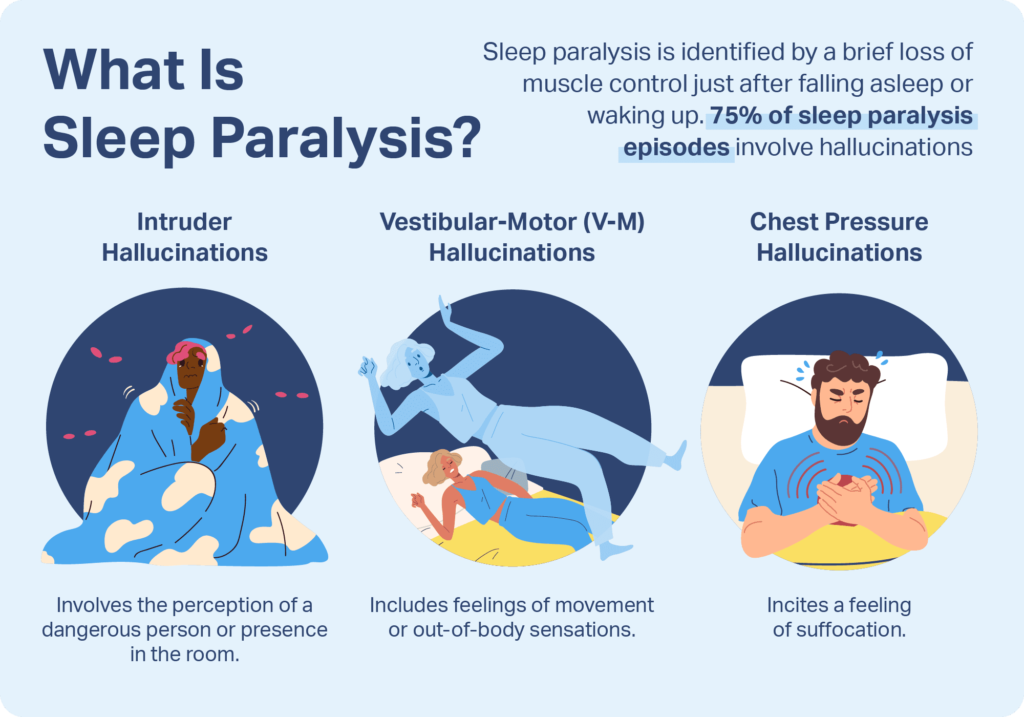
Conditions Associated With Sleep Paralysis and Hallucinations
Sleep paralysis is most often triggered by a lack of sleep. When sleep paralysis occurs in people who have no other underlying medical condition, it is called isolated sleep paralysis.
Sleep paralysis is also associated with other sleep disorders, such as narcolepsy, idiopathic hypersomnia, and obstructive sleep apnea.
- Narcolepsy: Narcolepsy is a chronic medical condition in which a person’s brain cannot control sleep-wake cycles appropriately. As many as 70% of people with narcolepsy experience sleep paralysis.
- Idiopathic hypersomnia: When a person has excessive tiredness that cannot be explained by an underlying cause, they may be diagnosed with idiopathic hypersomnia. Although studies have shown conflicting results, some researchers believe that a yet-unknown subgroup of people with idiopathic hypersomnia have a heightened risk of sleep paralysis.
- Obstructive sleep apnea: Obstructive sleep apnea (OSA) is a sleep-related breathing disorder caused by blockages in the airway. As many as 38% of people with OSA report episodes of sleep paralysis. Sleep paralysis appears to be most common in people with OSA who also experience significant daytime sleepiness.
Other factors that increase the risk of sleep paralysis include a younger age, high levels of stress or post-traumatic stress disorder (PTSD), panic disorder, jet lag, chronic pain, depression, alcohol use, and poor mental health.
In addition to occuring during episodes of sleep paralysis, hallucinations are associated with medications that interfere with sleep architecture and several neurological conditions.
“Roughly 3/4 of people who experience sleep paralysis will also experience auditory, visual, tactile or other hallucinations also colloquially known as sleep demons.”
Dr. Kara Bagot, Psychiatrist
What Causes a Sleep Paralysis Demon?
Although the exact cause of sleep-related hallucinations remains unknown, many experts believe that hallucinations during sleep paralysis occur when people experience the vivid dreams of REM sleep while they are awake.
To explain the often frightening experiences during these hallucinations, researchers have considered the role of hormones, mirror neurons, changes in breathing, and the survival centers of the brain.
- Serotonin: As a person begins to wake up, hormones like serotonin suppress REM sleep and contribute to increased awareness of the person’s surroundings. But during an episode of sleep paralysis, serotonin is released while a person remains stuck in REM sleep. This may induce hallucinations and activate fear circuits in the brain.
- Brain disturbances: Malfunctions in parts of the brain responsible for creating an image of the body may underlie the creation of human-like figures often seen during a hallucination. These disturbances may also be responsible for the sexual nature of some hallucinations, as well as for the phantom movements and pain that sleepers may feel in their limbs.
- Breathing changes: When major muscles become paralyzed during REM sleep, a person’s breathing normally grows more shallow. Becoming aware of diminished breathing during an episode of sleep paralysis may explain the feelings of suffocation or pressure on the chest that people describe during a sleep-related hallucination.
- Cycles of fear and panic: As a person begins to realize that they cannot move despite their alarming perceptions, their fear may escalate and trigger panic or a fight-or-flight response. This in turn may exacerbate the frightening content of their hallucinations.

Cultural Depictions of Sleep Demons
While modern scientists consider sleep demons to be hallucinations, this is not the first or only interpretation of this phenomenon. Societies throughout history have developed their own explanations for these experiences, each stemming from a unique cultural context.
- Lilitu: Some of the earliest writing related to sleep paralysis comes from Mesopotamia around 2400 BC. These accounts refer to Lilitu, a female demon. Researchers believe that it is from this early folklore that the concepts of incubus, succubus, and the night-mare descended.
- Night-mare: In Europe during the middle ages, the term night-mare referred to a supernatural entity, typically female, that positioned herself on top of a person’s chest to suffocate them. Medical explanations up to the 20th century suggested that a night-mare was caused by stagnant blood or vapors rising from the stomach and affecting the nervous system.
- Ag rog: The old hag phenomenon , also called ag rog, was described by residents of Newfoundland in the 1970s. Believers attribute paralysis, pressure on the chest, and other symptoms to blood that has stagnated, excessive work, or an enemy who wants to harm the sleeper.
- Pisadeira: In Brazilian folklore, a pisadeira is an old woman who lies in wait on roofs and walks on the chests of people who sleep on their back with a full stomach. This character takes on slightly different forms and features in different parts of the country.
- Kanashibari: Kanashibari is a Japanese name for an experience between sleep and wakefulness involving paralysis, fear, anxiety, and sometimes hallucinations. The term kanashibari comes from a similar-sounding word that describes the magical powers of a Buddhist deity, which monks were believed to be capable of harnessing to paralyze others.
- Jinn: Some in Egypt attribute sleep paralysis to Jinn , which are supernatural creatures associated with witchcraft, madness, and nightmares. These creatures are said to be able to terrify or possess a sleeping person.
- Khmaoch sângkât: In Cambodian refugees, sleep paralysis may be described using the Khmer phrase khmaoch sângkât, which describes a supernatural being pushing down on the sleeper’s chest or neck. Hallucinations may include a ghost dispatched by a sorcerer, a demon wanting to cause fear, or a person who died during the Cambodian genocide.
Dreams vs. Hallucinations
Hallucinations can be hard to distinguish from dreams, but several differences make these two phenomena distinct.
- Awareness: People experiencing sleep paralysis are typically aware that they have woken up, while dreamers are most often unaware that they are asleep.
- Setting: While dreams may take place anywhere and often include settings outside of the home, sleep-related hallucinations overlap with reality and take place within a person’s bedroom or real-life sleep environment.
- Emotions: Although some episodes of sleep paralysis may be pleasant or enjoyable, up to 90% of hallucinations during sleep paralysis involve feelings of fear. By contrast, only around 30% of dreams can be considered frightening.
- Recall: Many people forget their dreams after waking, but people with nighttime hallucinations often recall the experience vividly.
How to End an Episode of Sleep Paralysis
Finding ways to interrupt episodes as they are happening is an important coping strategy for people with sleep paralysis. Potential ways for escaping an episode of sleep paralysis include:
- Attempting to move the arms, legs, or torso
- Trying to move the mouth or eyes
- Being touched by another person
- Being roused by an alarm clock
- Focusing on relaxing the body and mind
- Mentally reciting a mantra or prayer
Researchers have proposed that lucid dreaming may be another way for people to gain control over their sleep paralysis. Although more research is needed, learning methods for lucid dreaming may help people turn frightening hallucinations into more neutral or positive experiences.
What You Can Do to Prevent Sleep Paralysis Demons
To prevent sleep paralysis and associated hallucinations, consider ways to address any underlying triggers for episodes.
- Learn about sleep paralysis: Understanding what is happening in the body during sleep-related hallucinations can reduce the confusion and fear they cause. Many people feel less afraid once they understand that hallucinations are alarming but harmless.
- Do not ignore fear and anxiety: Anxiety may increase the risk of poor sleep and sleep paralysis. Conversely, sleep paralysis can itself cause anxiety. To interrupt this cycle, consider talking to your doctor or a mental health professional about ways to manage fear and anxiety.
- Relax before bed: Not only does relaxation help you sleep better, it may also reduce the chances of having an episode of sleep paralysis.
- Change sleeping position: Research suggests that shifting how you sleep may also help prevent episodes of sleep paralysis. For instance, if you are a back sleeper, try sleeping on your side or stomach instead.
- Improve your sleep hygiene: Since sleep paralysis is linked to other sleep issues, improving your sleep hygiene may help reduce episodes. Maintain a consistent sleep schedule, create a relaxing nightly routine, and avoid things that interfere with sleep, like caffeine, alcohol, and the bright lights created by electronics.
- Start a sleep journal: Consider starting a sleep diary to record both nighttime sleep issues and daytime symptoms. Tracking these experiences over time may help you pinpoint the early signs of sleep paralysis and lead to a more helpful conversation with your doctor.
Perhaps the most important way to prevent sleep-related hallucinations is to talk to your doctor. Having an honest and open dialogue allows a doctor to accurately assess your condition, provide education, and recommend the best treatment approach.

Still have questions? Ask our community!
Join our Sleep Care Community — a trusted hub of sleep health professionals, product specialists, and people just like you. Whether you need expert sleep advice for your insomnia or you’re searching for the perfect mattress, we’ve got you covered. Get personalized guidance from the experts who know sleep best.
References
10 Sources
-
Scammell, T. E. (2022, June 12). Clinical features and diagnosis of narcolepsy in adults. In R. Benca (Ed.). UpToDate.
https://www.uptodate.com/contents/clinical-features-and-diagnosis-of-narcolepsy-in-adults -
American Academy of Sleep Medicine. (2014). The International Classification of Sleep Disorders – Third Edition (ICSD-3). Darien, IL.
https://aasm.org/ -
Pelak, V. S. (2019, March 19). Approach to the patient with visual hallucinations. In P. W. Brazis (Ed.). UpToDate.
https://www.uptodate.com/contents/approach-to-the-patient-with-visual-hallucinations -
Cox, A. M. (2015). Sleep paralysis and folklore. JRSM Open, 6(7), 2054270415598091.
https://pubmed.ncbi.nlm.nih.gov/28008370/ -
Davies, O. (2003). The nightmare experience, sleep paralysis, and witchcraft accusations. Folklore, 114(2), 181–203.
https://www.tandfonline.com/doi/abs/10.1080/0015587032000104211 -
Ness, R. C. (1978). The Old Hag phenomenon as sleep paralysis: A biocultural interpretation. Culture, Medicine and Psychiatry, 2(1), 15–39.
https://pubmed.ncbi.nlm.nih.gov/699620/ -
de Sá, J. F., & Mota-Rolim, S. A. (2016). Sleep paralysis in Brazilian folklore and other cultures: A brief review. Frontiers in Psychology, 7, 1294.
https://pubmed.ncbi.nlm.nih.gov/27656151/ -
Fukuda, K., Miyasita, A., Inugami, M., & Ishihara, K. (1987). High prevalence of isolated sleep paralysis: Kanashibari phenomenon in Japan. Sleep, 10(3), 279–286.
https://pubmed.ncbi.nlm.nih.gov/3629091/ -
Jalal, B., & Hinton, D. E. (2013). Rates and characteristics of sleep paralysis in the general population of Denmark and Egypt. Culture, Medicine and Psychiatry, 37(3), 534–548.
https://pubmed.ncbi.nlm.nih.gov/23884906/ -
Hinton, D. E., Pich, V., Chhean, D., & Pollack, M. H. (2005). ‘The ghost pushes you down’: Sleep paralysis-type panic attacks in a Khmer refugee population. Transcultural Psychiatry, 42(1), 46–77.
https://pubmed.ncbi.nlm.nih.gov/15881268/



